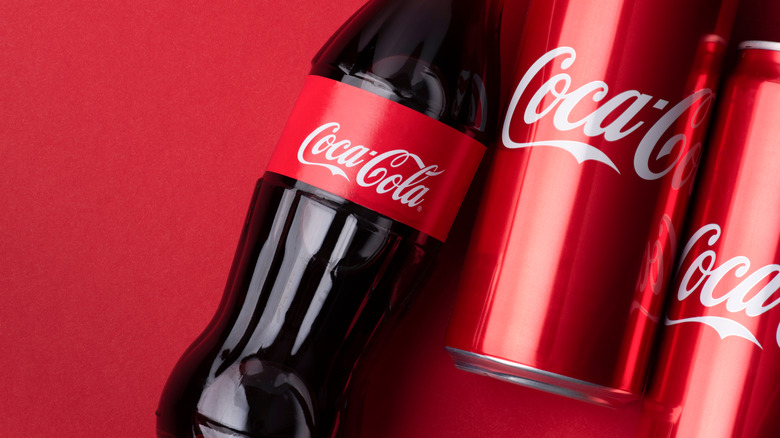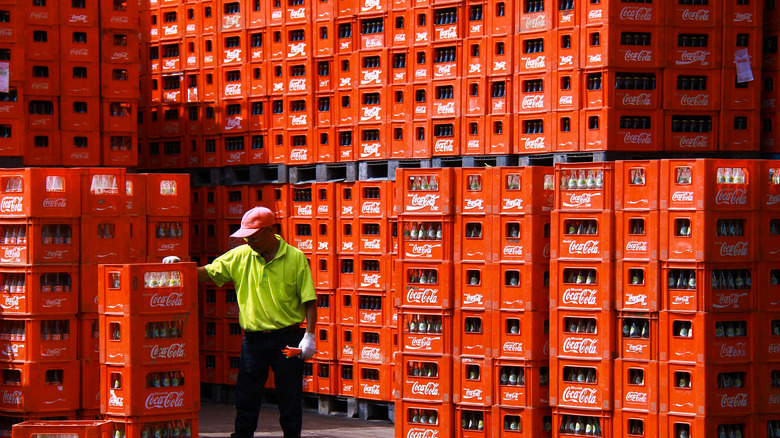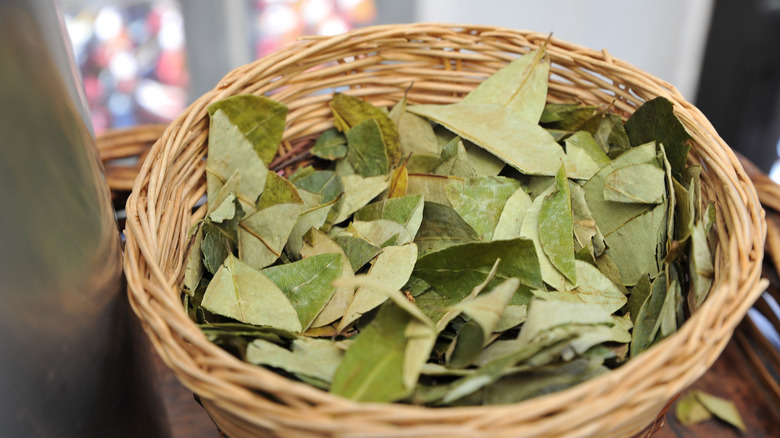Coca-Cola Still Makes Cocaine In A Factory In New Jersey
Coca-Cola is one of the most recognizable brands in the world. In addition to being a delicious beverage in its own right (especially in glass bottles), Coke is also a fantastic food additive to other dishes with a variety of surprising uses, particularly in barbecue. Whether your jam is Diet Coke, Cherry Coke, or Vanilla Coke (why, though?), chances are you've had plenty of the drink during your life.
Likewise, we're all familiar with the stories about Coca-Cola containing cocaine — stories based entirely in fact. The name isn't a coincidence; while "cola" comes from the caffeine-heavy African kola nut, "coca" comes from the coca leaf — a.k.a. the thing that produces cocaine.
We may not know founder John Stith Pemberton's actual recipe for Coca-Cola — it's an extraordinarily closely-guarded secret — but we know a couple of the key ingredients from the beverage's founding. And one of those ingredients is derived from the coca leaf.
Coca-Cola produces thousands of pounds of cocaine per year
By the time cocaine was outlawed in 1914, company president Asa Candler had already switched the formula from using active cocaine to "decocainized" leaves made in a process that separates what we know of as cocaine from the leaf product used in Coca-Cola. Candler insisted (despite only a miniscule amount of coca leaves being used in the final product) the drink still needed coca leaf to function, so the company lobbied Congress hard for a special exemption to the ban — and got one.
This meant that the Coca-Cola Company was legally allowed to manufacture cocaine — albeit not to sell or use it for anything. And incredibly, this is still true today. According to Eater, a Mayflower, New Jersey facility operated by the Stepan Company imports enough coca leaves to make $200 million worth of cocaine annually and turns these leaves into cocaine to get at those decocainized leaves. Ultimately (and for obvious legal reasons), this product needs to be incinerated as part of the manufacturing process.
So, no, modern Coca-Cola does not contain cocaine. Nowadays, the company mostly restricts its use of strange (and possibly unnerving) ingredients to artificial sweeteners like Ace-K.
Cocaine was once considered a super drug
Why include cocaine in the first place? Like many other substances throughout history, cocaine was originally seen as a wonder drug. Chewing coca leaves has been a traditional South American remedy for stomach issues and altitude sickness for centuries. In the mid-1800s, a German chemist named Friedrich Gaedcke figured out how to turn it into an alkaloid, giving birth to the white powder we know today. Cocaine's popularity quickly exploded in Europe and the United States, leading to a multitude of cocaine-based food products. The drug had major proponents, including Thomas Edison, Queen Victoria, and Ulysses S. Grant.
As CNN noted, famed psychologist Sigmund Freud once wrote that he took "very small doses of it regularly against depression and against indigestion and with the most brilliant of success."
Inevitably, though, cocaine's popularity led to a significant backlash in the late 1800s and early 1900s. Similar to the temperance movement of the same period, the drug was linked to delinquency (and its opposition was propped up by more than a small amount of racism). But Coca-Cola (according to the company, at least) still needed it.


